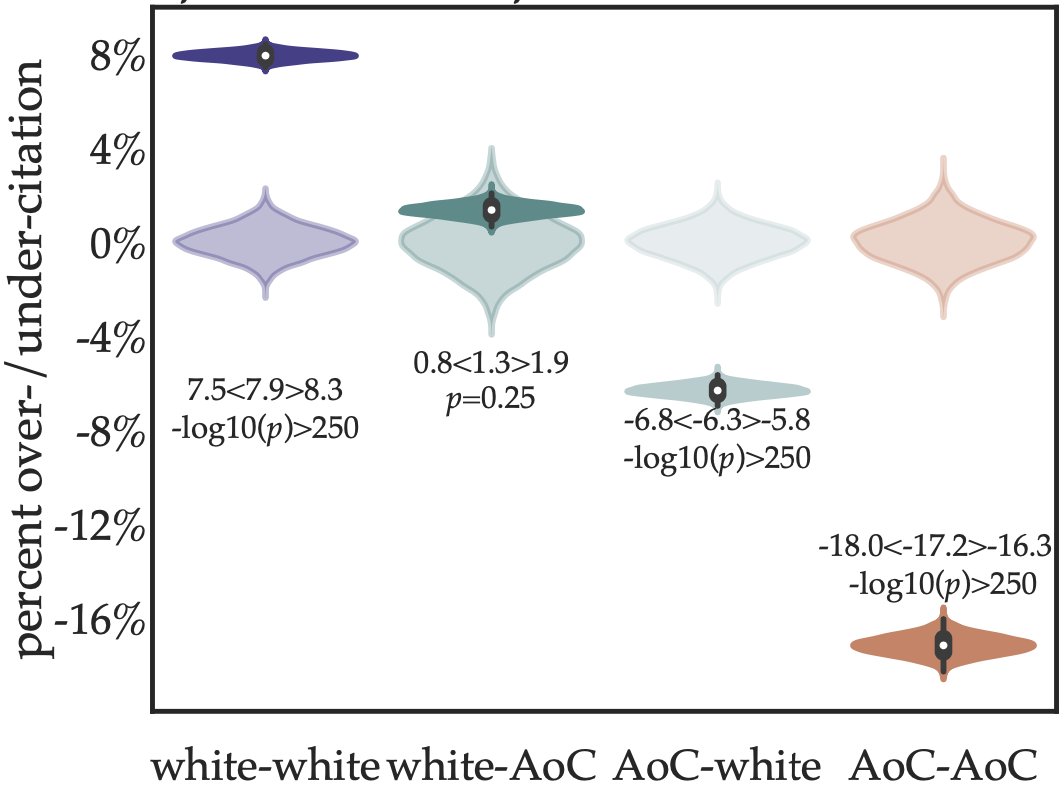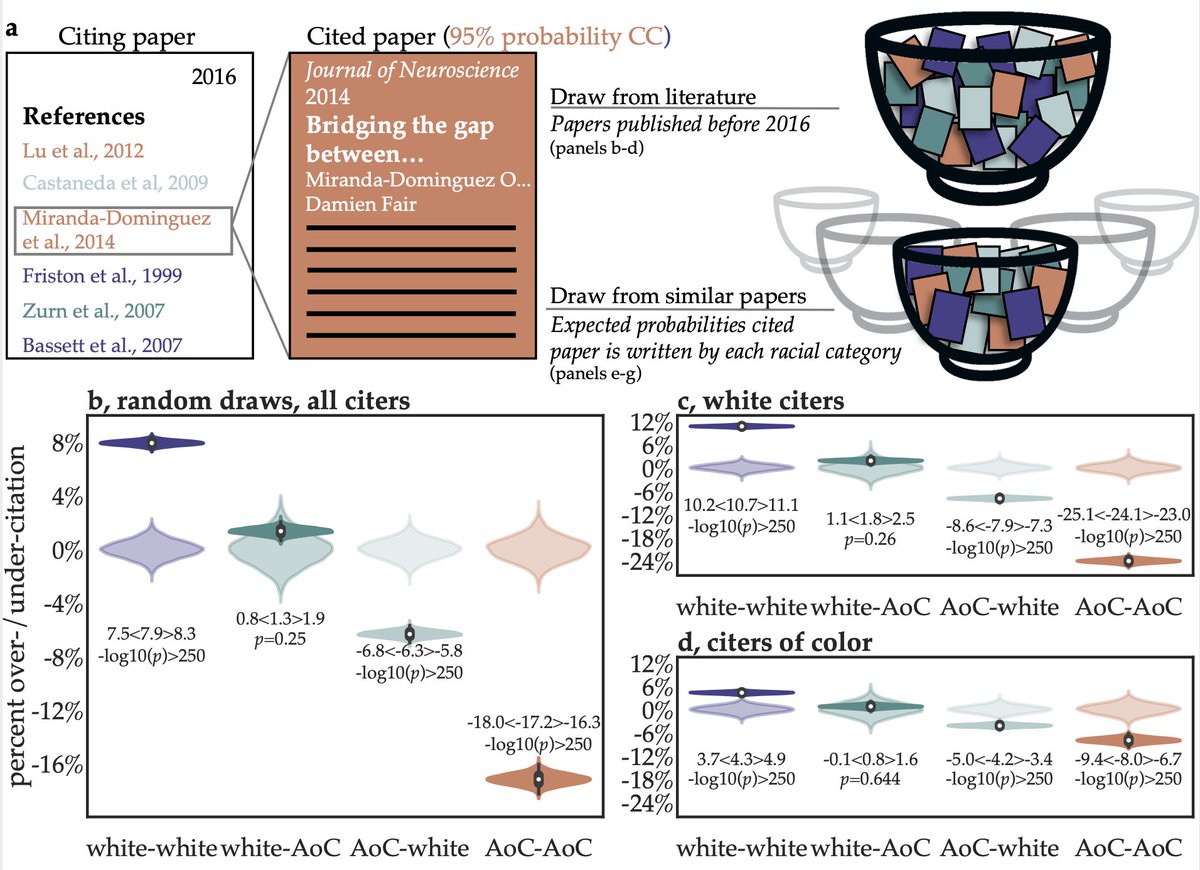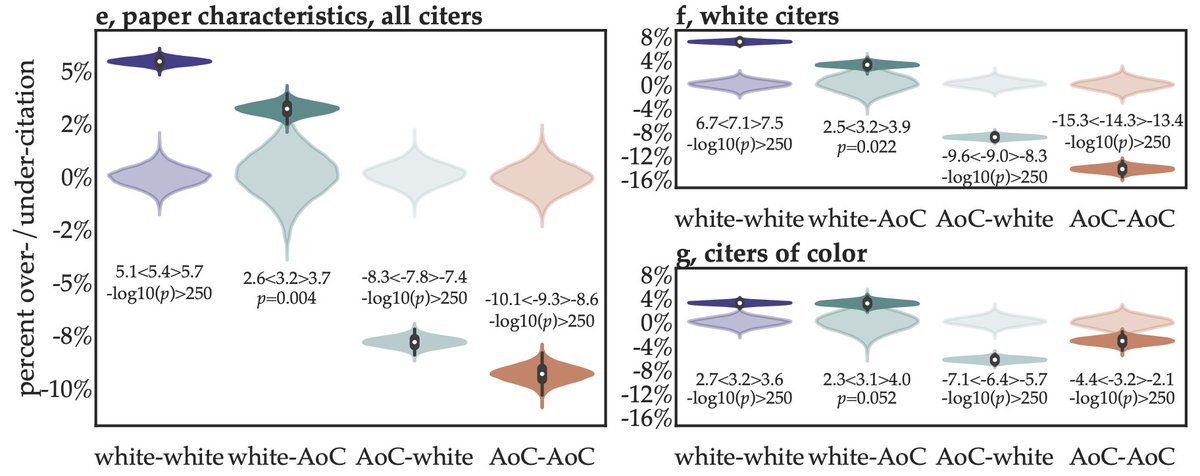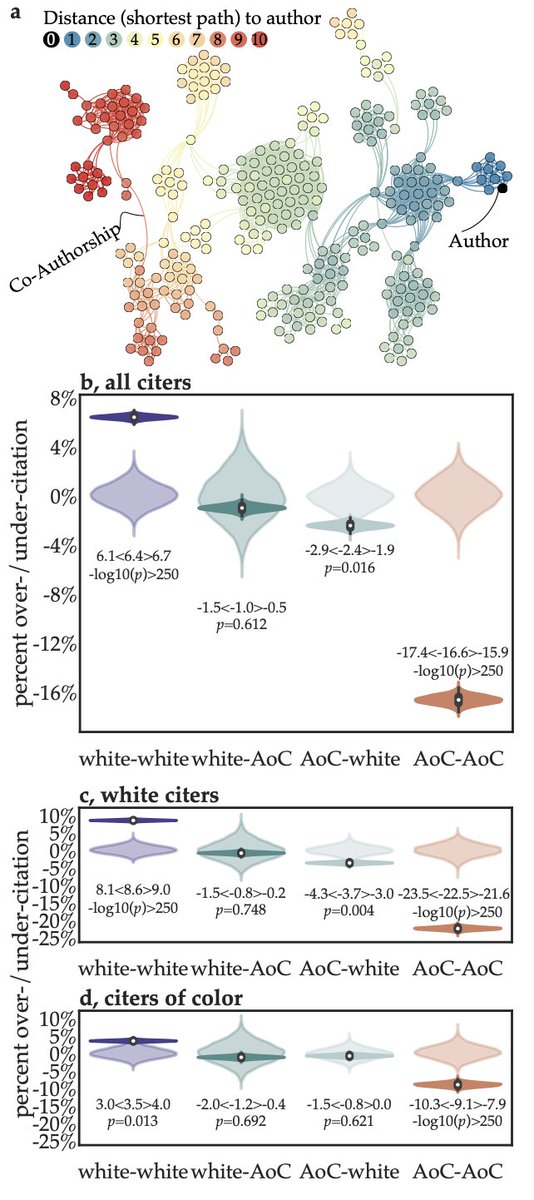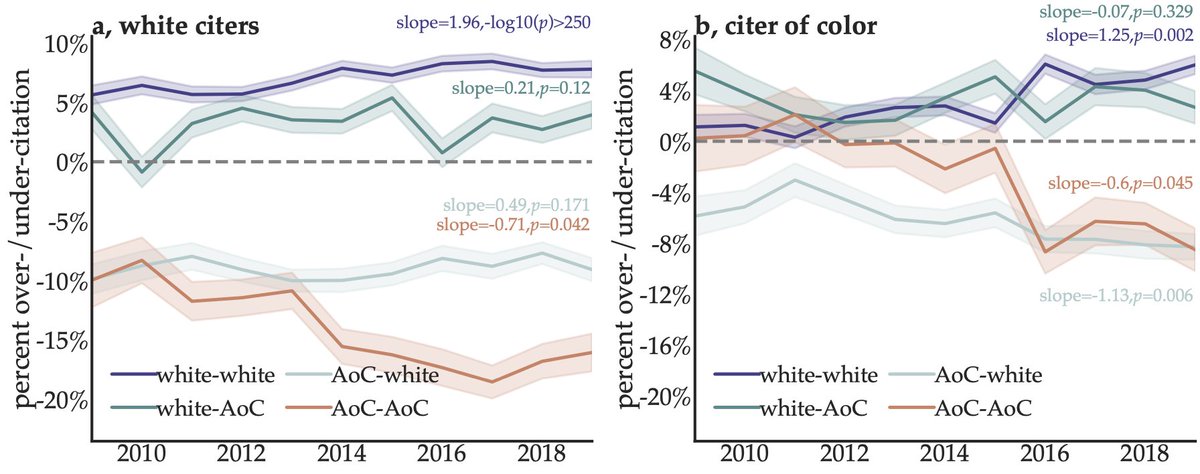Our new work: “Racial and ethnic imbalance in neuroscience reference lists and intersections with gender”. We analyze the race and gender of citing and cited papers in neuroscience over the last 25 years. https://www.biorxiv.org/content/10.1101/2020.10.12.336230v1">https://www.biorxiv.org/content/1...
Discrimination against racial/ethnic minority groups exists in the academy, & the associated biases impact hiring & promotion, publication rates, grant funding, & awards. How does bias impact the way scientists engage with ideas of academics in minority groups?
Citations are a marker of such community engagement, as well as a currency used to attain career milestones. Here we assess the extent and drivers of racial and ethnic imbalance in the reference lists of papers published in five top neuroscience journals over the last 25 years.
Using two different databases and a deep neural network, we obtain probabilistic estimates of authors’ presumed race/ethnicity based on their first & last names. The models we use are a flawed approach for assessing something as personal, complex, & societally defined as race.
Yet, the self-identified & perceived race of a scholar can interact with individual & structural biases in the academy; to the extent that the models can accurately measure one/both of these characteristics, they can nontrivially capture the effects of biases on authors of color.
We find that authors of color are under-cited in the neuroscience literature. White citers (citing papers with white first & last authors) in particular under-cite authors of color. We demonstrate this imbalanced citation behavior using three base-rate models.
First, we compare observed citation rates to a “random draws” base-rate model, where authors select a set of papers to cite by randomly drawing from all papers that were published previously to their own paper. Papers from authors of color are markedly under-cited.
Second we compare observed citation rates to a “paper characteristics” model, where authors draw from the set of papers similar in character to those in their own reference list (e.g., same journal, author seniority, year). Papers from authors of color are markedly under-cited.
To unpack our findings, we examine co-authorship networks and find that, while the network has become more integrated in general, the current degree of segregation by race/ethnicity is greater now than it has been in the past.
We can also use these networks (we make one for each year) to build our third base-rate model, one in which authors randomly cite papers of authors the same distance away in the network as their actual citations. Here, again, papers from authors of color are markedly under-cited.
Finally, we consider the intersection of gender and race/ethnicity (Asian, Black, Hispanic, white). We find that women of color are the most under-cited, and white men are the most over-cited.
This work was inspired by previous work of @jddwor, @perryzurn, and @DaniSBassett, who found an imbalance against women in citation lists. https://www.nature.com/articles/s41593-020-0658-y">https://www.nature.com/articles/...
This was an extremely collaborative effort by @claulopezneuro @pragya_srivas @stiso_jennifer @neuro_dz @KafuiDzirasa @DrDamienFair @kaczkurkin @bjmarlin @DShohamy @LucinaUddin whom we deeply thank for their contributions!

 Read on Twitter
Read on Twitter